Gellir lawrlwytho cynnwys at ddefnydd anfasnachol, megis defnydd personol neu ar gyfer adnoddau addysgol.
Ar gyfer defnydd masnachol cysyllwch yn uniongyrchol gyda deilydd yr hawlfraint os gwelwch yn dda.
Read more about the The Creative Archive Licence.
Disgrifiad
Supplementary Photo Gallery
Further photographs of the church and churchyard at Llanelieu
Photography: John Ball
Date: 11 May 2009
Camera: Nikon D50 digital SLR
St Ellyw's Church, Llanelieu, Breconshire
The small nucleated church settlement of Llanelieu, at the head of the steep-sided valley of Cwm Rhyd-Ellywe, includes a cluster of stone-built farm complexes including Llanelieu Court and Ty-du. These probably originated from the amalgamation of smaller holdings in the later medieval period, though the farmhouse at Llanelieu Court has two arched doorways which possibly survive from a 14th century monastic cell of Llanthony Priory based at Llanelieu. Settlement in the surrounding countryside is predominantly represented by medium to large-sized farms of 18th century origin, generally associated with springs or streams, and characteristically, as at Ffostyll, originally with stone farmhouses and outbuildings. [Extracted from Historic Landscape Characterisation - The Middle Wye: Ffostyll, Gwernyfed and Talgarth, Powys on the Clwyd-Powys Archaeological Trust (CPAT) website]
Image 1, 2:
East of Talgarth the old lanes follow the lie of the land, sinking into it, winding their way through wooded slopes and undulating fields, their progress finally deflected at the dead end head of Cwm Rhyd Ellywe. Llanelieu still feels like the end of a long road. Beyond a cluster of old stone houses, stone steps lead up through a screen of trees into a large loping field with an ancient building stranded on its further side. There are sheep grazing, a few random gravestones on the south side, almost none of them upright, inscriptions mostly worn away. A stream rounds the churchyard on the east and north, meeting another at the angle, deeply banked, islanding the llan in its own enclosed world. [Description extracted from Wales's Best One Hundred Churches by T. J. Hughes, Poetry Wales Press Ltd., Bridgend, 2006; ISBN 978-1-85411-427-3]
Image 5, 6:
The column monument (Image 5), inscribed 'I.W. 1718', is thought to have carried a sundial. Unusually, the 17th century heavy wooden door (Image 6) in the south porch is hinged on the right.
Image 7, 8:
Two bell ropes hanging each side of the west window lead upwards to the bellcote in which are hung two bells, one cast c. 1180, the other c. 1300. Their authentic medieval tones were recorded and used in the 1994 television production of Cadfael (aka Brother Cadfael).
Image 9:
Parish chest in the chancel.
Image 10:
The early medieval wall plaster, still present on most surfaces, was extensively decorated but later covered. Some of the paintings have been painstakingly exposed once more. On the west wall, in black line, are Adam and Eve and the Tree of Life.
Image 11:
Mid 18th century memorial to the Watkins family:
Here Under Neath
Lyeth the Body of Mary
ye Wife of Thomas Watkins
of Ffostille in this Parish
Gent. She departed this
Life ye 3rd Day of Octor 1748
Aged 54
And ALSO the Body of
John Watkins Gent: Eldest Son
of Thomas Watkins and Mary
his Wife; who departed this
Life the 25th Day of July 1765
Aged 39.
In Memory of Thomas Watkins Late of
Ffostille GENT who departed this Life the
1st Day of August 1769, Aged 69 Yrs. GAMES
Image 12:
Late 18th century memorial to the Price family:
Near this
Place lieth the Bodies of
Thomas Price, James Price,
and Sibyl Price;
Sons and Daughter
of REES PRICE of
CWM-SYFYDDIG
in this Parish GENT.
Thos. died 11th Dec 1778 - 7[?]
Jas. died 13th Jan 1779 - 67
Sib. died 3rd Mar 1779 - 73.
Gweddeidd dra Mwyneidd-dra dible
A Gafodd pan colledd e'r Goleu;
Gwych Delûnwr Tôn wr Tannau,
Gafodd Ddawn llawn yn ei Lê.
The Welsh verse translates as:
Surely propriety and mercy
Was granted him when he lost the light.
An excellent harpist, tuner of strings,
He received full gifts in its place.
[Translated by Brynach Parri]
Image 13:
Memorial to William Williams:
To
THE Memory of
William Williams,
late of Cwmgynfyn, in
the Parish of Talgarth:
who departed this Life
July 31st 1759
AGED - 43
EPILOGUE"This is a church shipwrecked on the rock of the Reformation, its screen half-destroyed, its icons half-eliminated, its parishioners daubing paint and inserting a pulpit. Monuments recall generations of the local Aubrey family, imposing continuity and order on this lonely, lovely corner of Wales." [Wales: Churches, Houses, Castles by Simon Jenkins, Penguin, London, 2008; ISBN 978-0-713-99893-1]









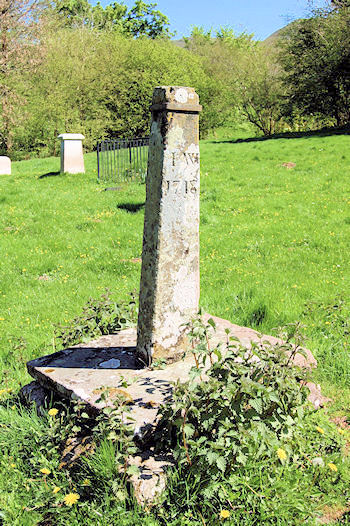

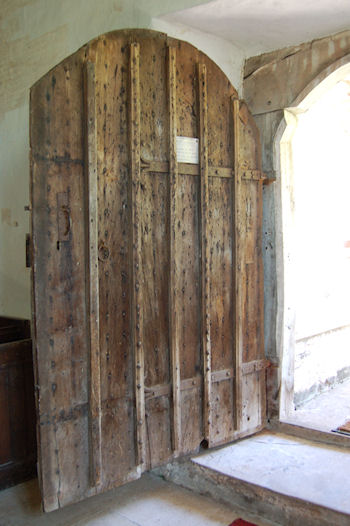





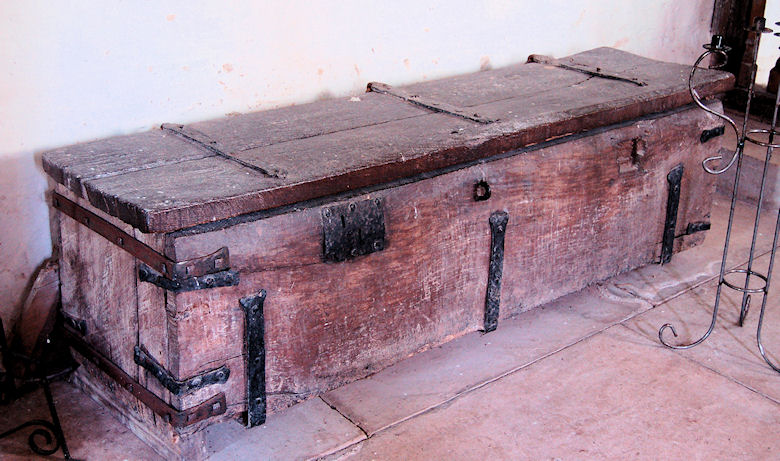



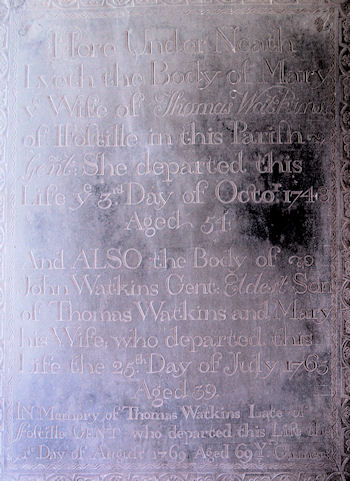

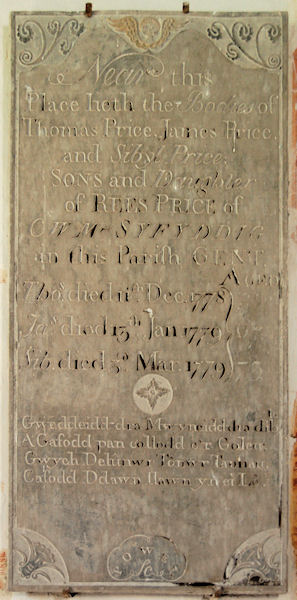




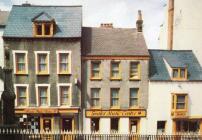
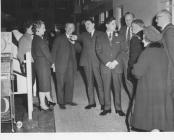
Oes gennych chi wybodaeth ychwanegol am yr eitem hon? Gadewch sylwad isod
Sylwadau (0)
Rhaid mewngofnodi i bostio sylw